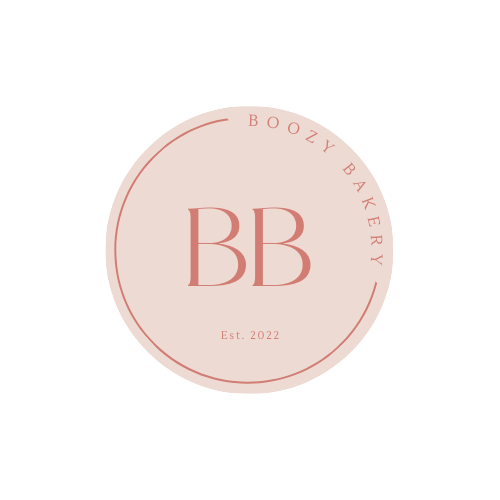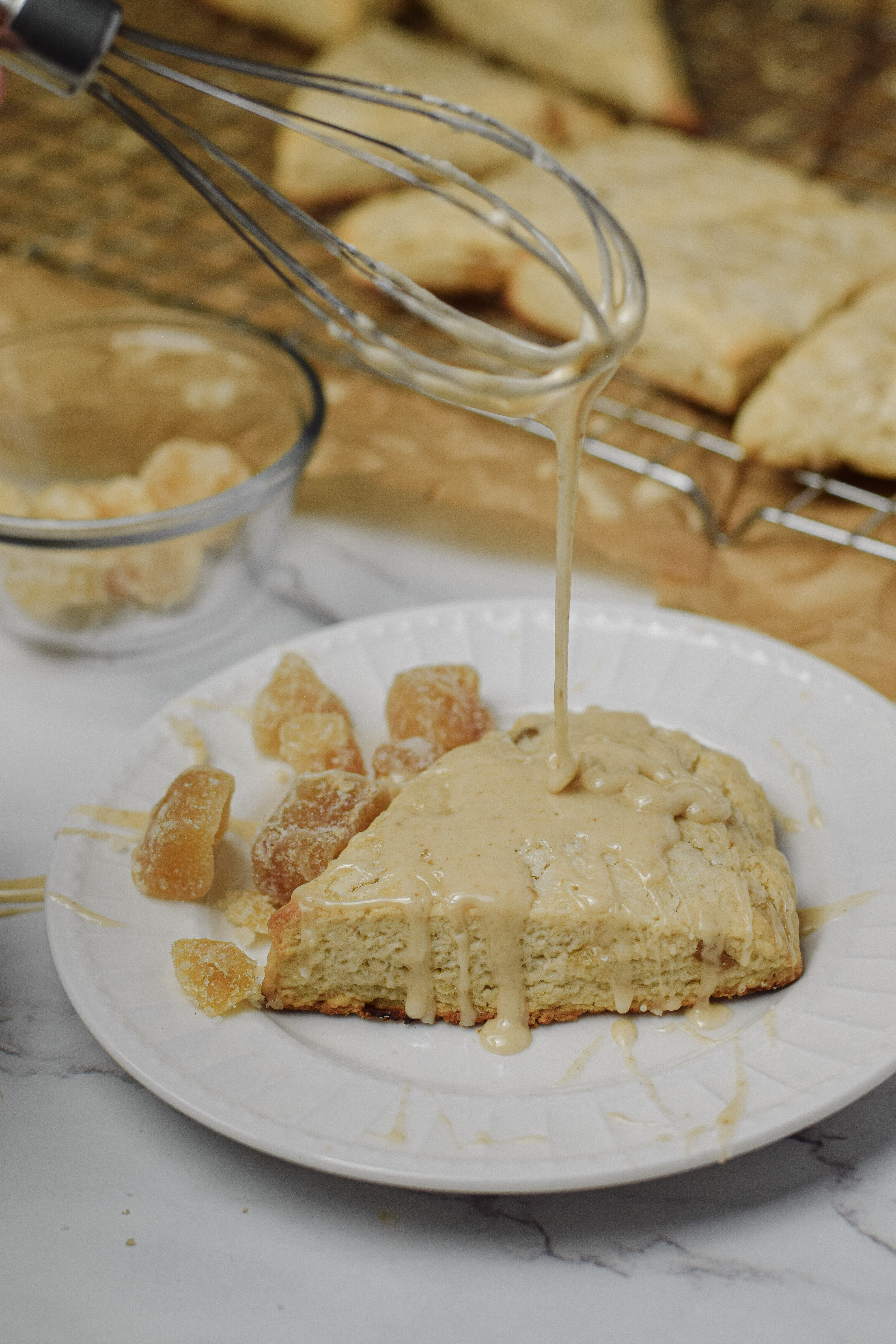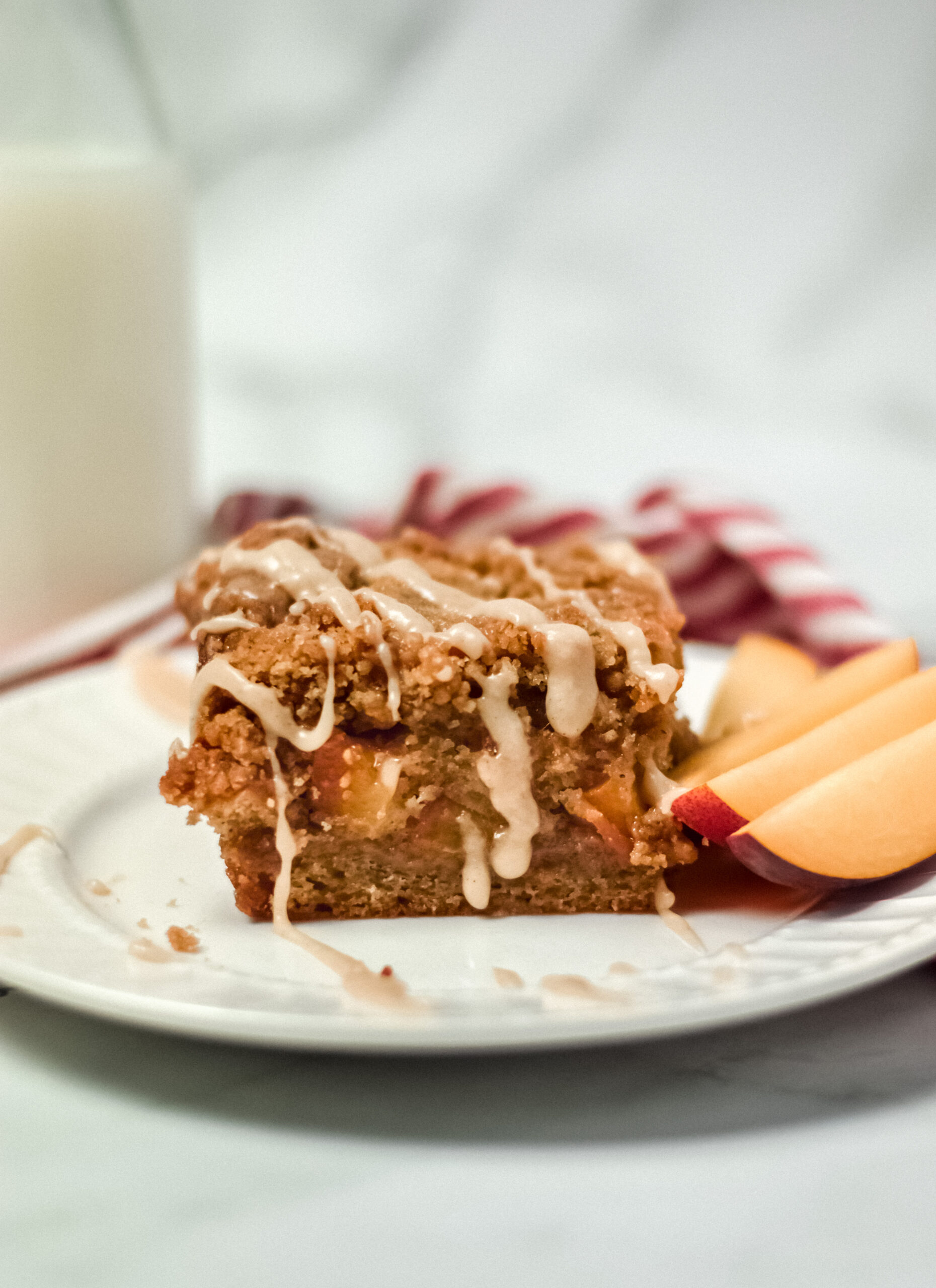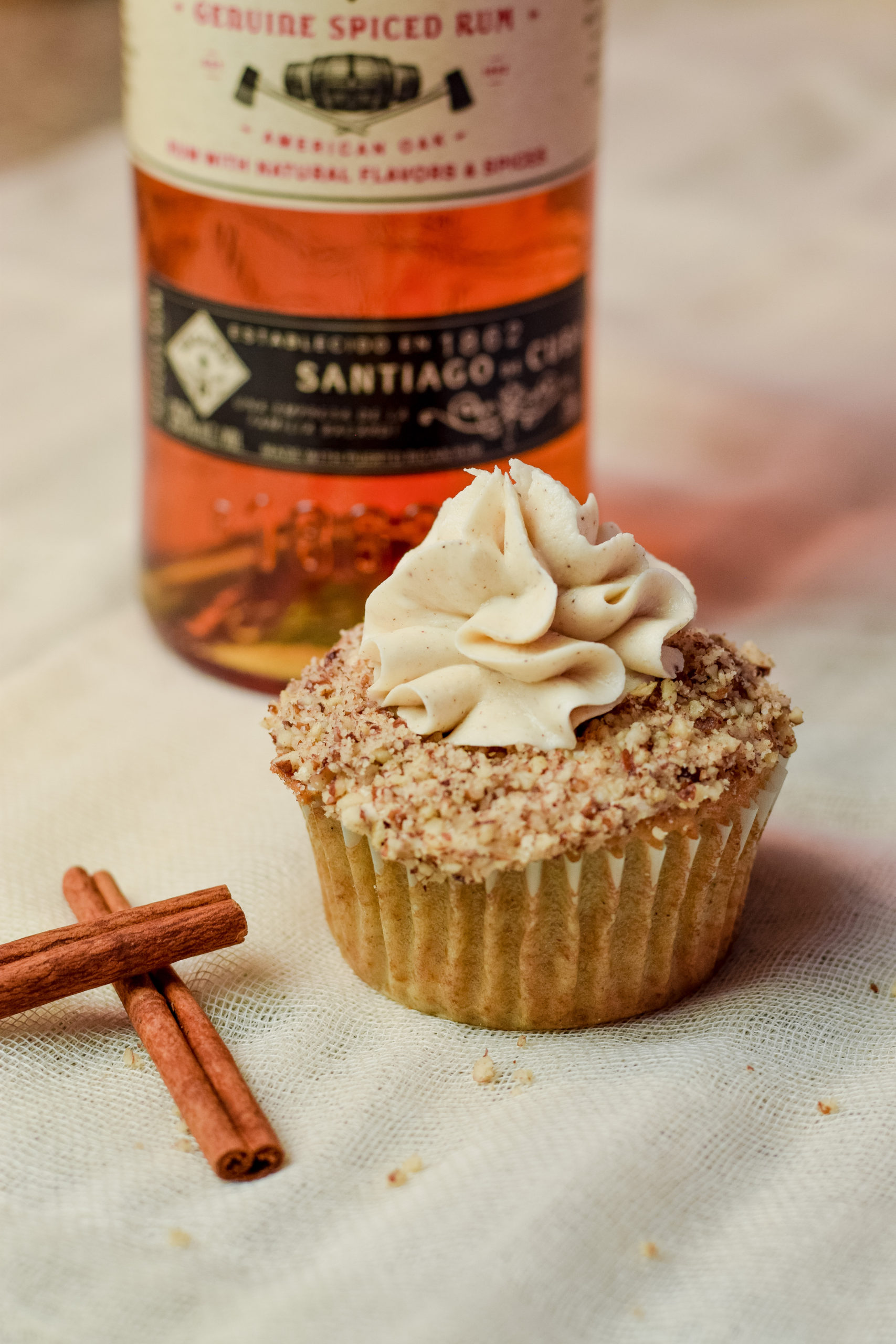The secret is out. I am obsessed with these maple pecan scones. They are so soft and ridiculously fluffy! These are the perfect fall scones. With warm notes of cinnamon and nutmeg, crunchy toasted pecans, and a nutty brown butter icing, these scones are to die for! They start out with a base recipe from Rose Levy Beranbaum (aka, the baking queen). Beranbaum’s recipes are always so perfectly calculated that I cannot get myself to change it. Why mess with perfection, you know? I just added some flavors to her plain scone recipe. You can find this base recipe in her book The Bread Bible. It’s an absolute must for every baker!!
What makes these Maple Pecan Scones so incredible?

Pecans: Duh. Toasting the pecans before adding them to the dough brings out a stronger, nutty flavor that compliments all the spices. Don’t skip this step! I even like to toast a few extra to sprinkle on top. These add a beautiful crunch to these otherwise soft and fluffy scones.
Maple syrup: Obviously. I recently bought some maple syrup in Canada because, well, it’s Canada. Now, I put it in everything! Fresh maple syrup is honestly a game changer. There is only 1 Tbs of maple syrup in this icing, but you can definitely add more. Just be careful because maple syrup is very sweet and can easily overpower all the other wonderful flavors. You can swap out maple syrup for honey if you don’t have any, but the scones will be more of a plain pecan scone.
Brown sugar: Brown sugar gives these scones their fluffy texture. The molasses in brown sugar adds extra moisture and creates the perfect tanginess to compliment the pecans.
Brown butter: Listen. I am not usually an icing on my scone type of person, but you cannot skip out on this icing. It really ties all the flavors together here! Brown butter mixed with cinnamon, vanilla and maple… incredible.
Tips for success
- Freeze your butter. You’ll have to cut up your butter into tiny pieces before anything else. I like to do this step first and then pop it in the freezer while I prepare my other ingredients. Cold butter is the key to getting flaky scones! Cold chunks of butter in your dough will melt and create pockets. This is where your flakiness comes from! It’s also how they create laminated pastries like croissants and puff pastry.
- Preheat your baking sheet. While your oven is preheating, toss your baking sheet in the oven. Baking scones on an already preheated baking sheet will help you get the perfect crispy outside while keeping the inside soft.
- Add in the cream slowly. It’s very difficult to measure exactly how much liquid you need to add to a scone. It depends on several factors such as the dough temperature, type of cream, mix-ins, and how you measured the ingredients. 230g is the closest measurement of how much cream I usually add in. You want to add enough cream so that all the flour is coated, but not so much that the dough becomes wet and sticky. It should easily fall off your hands when you pick it up.

The secret to beautiful, flaky scones!!
Fold your dough. This is THE secret to extraordinary, flaky scones. Once again, Rose Levy Beranbaum is an absolute genius. Her secret to flaky scones is folding them like croissants before baking. Most scone recipes just have you flatten the dough and cut it immediately. This recipe will have you roll out the dough and fold it over itself 3 times. This helps evenly distribute all those butter chunks so that you’ve got literally hundreds of flaky layers.
Start by rolling the dough into an 8×12 inch rectangle like the picture.

Next, fold your dough in thirds “hamburger style.” In other words, fold the top and bottom toward the center. Then, turn the dough so that the seam runs vertically, like the picture below.

Re-roll the dough into an 8×12 inch rectangle and repeat this fold and turn 2 more times. Finally, roll into an 8×12 inch rectangle one last time to cut the scones.

Troubleshooting
Why is my dough so sticky?
If your dough sticks together in one ball, there is too much liquid. You can try adding some flour 1 Tbs at a time until it corrects itself. Your dough should be a shaggy mess that separates itself in large chunks. Check out the picture under “the secret to flaky scones.”
My dough won’t stick together.
If your dough is a crumbly mess that won’t stick together, try adding more cream 1 Tbs at a time.
Mixing method

This recipe requires you to cut cold butter into the flour. This makes sure that all your flour gets coated in fat, meaning it will weaken the structure of the scone to give it a delicate crumb. Adding the liquid in last allows you to get the perfect texture for your scone dough. You can always add more or less cream to your dough than the recipe calls for.
Make ahead/Freezing
Scones are 100x better when freshly baked. You can freeze these scones unbaked for up to three months in an airtight bag or container. If you do this, bake them like normal, but add an extra 8-12 minutes to the baking time. You can also leave the frozen scones to thaw in the fridge overnight and bake them the next day. For storing baked scones, store scones at room temperature for 2-4 days. Make sure they are wrapped tightly!
If you love these, you’ll also love…
Cinnamon Oat Scones with Brown Butter Icing
The Best Ever Pumpkin Scones With Maple Glaze
The Best Raspberry White Chocolate Scone Recipe
Maple Pecan Scones
Ingredients
- 304 g All-purpose flour 2 1/8 cup
- 230 g Heavy cream 1 cup
- 113 g Unsalted butter 1 stick
- 50 g Toasted pecans 1/2 cup
- 50 g Granulated sugar 1/4 cup
- 2 Tbs Brown sugar
- 1 tsp Baking powder
- 1 tsp Cinnamon
- 1/2 tsp Baking soda
- 1/2 tsp Salt
- 1/2 tsp Nutmeg
Brown Butter Maple Icing
- 67 g Powdered sugar 1/2 cup + 1 Tbs
- 3 Tbs Unsalted butter, browned
- 1 Tbs Maple syrup
- 1 Tbs Milk or heavy cream Heavy cream will result in a thicker icing
- 1/2 tsp Vanilla extract
- Pinch Cinnamon
Instructions
- Preheat the oven to 400 F. Place your baking tray in the oven so that it is hot when you place your scones on it to bake. While heating up, toss chopped pecans on the tray for 2-5 minutes to toast. They should brown a little bit and give off a strong nutty aroma. As soon as you smell this, pull them out of the oven! You should check them every minute. Once they are toasted, set them aside to cool before adding into scone dough.
- Cut your butter into tiny, ¼-½ inch cubes. The smaller they are, the easier it will be to incorporate them later. I like to use a bench scraper to cut my cutter! Place butter chunks onto a plate or bowl and keep them in the freezer while you prepare your other ingredients.
- In a large bowl, mix together the flour, sugar, brown sugar, baking powder, baking soda, salt, cinnamon, and nutmeg. Mix until thoroughly combined.
- Grab your butter out of the freezer and toss it into your flour bowl. Using a pastry cutter or your hands, cut the butter into your flour mixture. If using your hands (my favorite method) you can pick up large chunks of butter and rub them between your thumb and the rest of your fingers to flatten them out into the flour mix. Think about the hand gesture you use when referencing money! Keep doing this until you’re left with only small, flattish chunks of butter. (See picture above under “mixing method.”) They should be no bigger than peas. If you feel your butter is melting or not staying cold enough, place your mixing bowl in the freezer for about 15 minutes and then resume.
- Use your hand to create a well in the center of your mixture. Pour in half the cream. Make sure it’s cold! Then use your hand to bring the outside mixture into the center where you poured the cream. Gently mix until all your flour mixture is coated in cream. Slowly add in more cream as needed. Refer to the picture under “tips for success” to get an idea of what your dough should look like.
- Once your dough gets to your desired consistency, gently fold in the pecans using your hands.
- Turn your dough out onto a lightly floured surface. Pat dough down into a rectangle about 8 x 12 inches. You can use a rolling pin for this, but roll lightly as you don’t want to crush the layers! From here, fold the dough into thirds like an envelope. NOT lengthwise. Take your folded dough and turn it so that the fold seams are running vertically. This is one “turn.” Roll your dough back into another 8×12 inch rectangle and repeat the folding process (aka a turn) two more times. You should have folded and rerolled it three times when you’re done. End with the dough back in an 8×12 inch rectangle so you can cut the scones. (Refer to the pictures above, under “the secret to flaky scones.”)
- Cut your rectangle down the center vertically and horizontally so that you now have 4 rectangles. Cut each rectangle diagonally so that you end up with 8 triangles in total.
- Take your baking sheet out of the oven and line with parchment paper. Place your scones 2 inches apart. They shouldn’t spread much in the oven. Bake at 400 degrees F for 15-18 minutes until the top starts to get a light golden crust. You can also test these by gently touching the top of it. It should spring back when it is cooked completely. Let cool for 5 minutes before icing.
For The Brown Butter Maple Icing
- Start by browning your butter in a saucepan over the stove. Do this by placing the butter over medium low heat, stirring occasionally so that the butter doesn’t burn. Your butter will start to foam after a couple minutes. At this stage, stir constantly. The butter will turn a golden caramel color with brown crumbs at the bottom. It should give off a nutty aroma. Once your butter gets to this stage (about 5-8 minutes), remove it from heat and let cool for 10-20 minutes. If you’ve never browned butter before, check out this post by Sally’s Baking addiction!
- Add butter to a bowl with powdered sugar, maple syrup, vanilla, and cinnamon. Mix all ingredients with a whisk until combined. It will look like a lumpy mess. Don’t worry, it will come together when you add liquid to it!
- Add the milk and whisk until smooth. If you want to thin out the icing, add more milk 1/2 tsp at a time.
- Use a spoon to pour icing over each scone. Enjoy! 🙂









